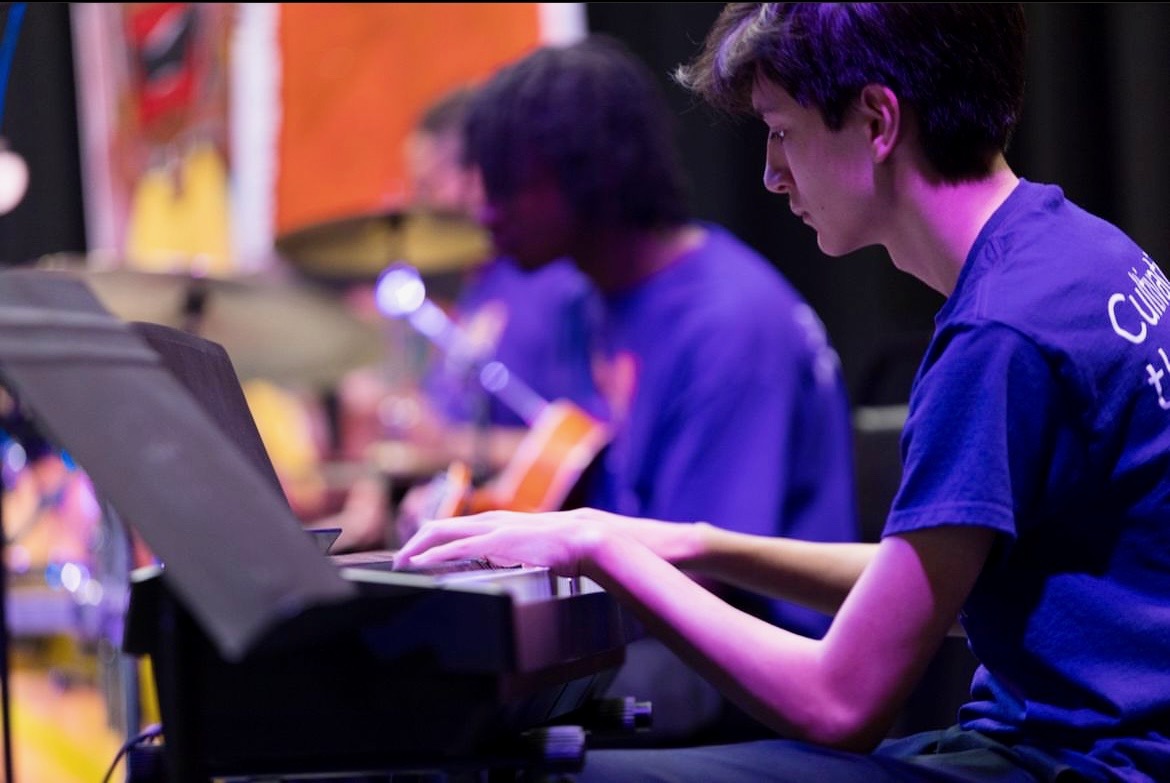The burst of the blazing saxophone floods the car as the stereo blasts, and the guitar sets the beat as Astrud Gilberto sings, “tall and tan and young and lovely, the girl from Ipanema goes walking.” It is 1964, 40 years after the boom of jazz, and the popular Brazilian bossa nova jazz song “The Girl From Ipanema” has just hit radio stations nationwide.
Roughly 59 years after 1964, the jazz genre is still a living document of the sound of music. Since its late 19th century birth in New Orleans, LA., jazz has continued to evolve, featuring new instruments, chords, melodies, progressions and style as decades pass.
“[Jazz] started off as people playing the blues,” Leland Thomas (12) said. “And as people played more and more blues they wanted to make it more complex … Instead of just playing a slow blues they would speed it up, which turned into bebops and rhythm changes, and after that … bebop was the biggest genre of jazz, and then it became a funk, more funky jazz.”
As a jazz musician himself, Thomas has been playing the piano for nine years, as well as the drums, trumpet and bass. Thomas is in his fourth year of jazz band at White Station and he plays the bass for marching band. Outside of band activities at school, Thomas participates in Memphis Jazz Workshop.
“Playing all these different instruments gives me an understanding of how … back in the day, the history of jazz, it was mainly big bands, there [weren’t many] combos, and you have like long stretches of melody with the trumpet, and piano you’re just usually playing chords, but trumpet and drums that’s like a huge part of it,” Thomas said. “Like, drums are a part of jazz.”
Alongside Thomas, Israel Garcia (12) participates in jazz band as a trumpet player. Garcia has been playing trumpet for six years and often listens to both traditional jazz and modern jazz as a way to inspire and grow his individual sound on the trumpet. Garcia found himself discovering the jazz genre amongst a group of friends.
“Me and my friends … would sing ballads in Music Theory, but then we kind of started going to jazz and then we started talking about jazz and different types of songs and we’d sing different stuff,” Garcia said.
As history begins to circle back around, the emergence of modern jazz artists has come into play. Artists like Laufey, Samara Joy and Corey Henry have moved their way to the ears of jazz fans with a new take on the genre. In comparison to traditional jazz, modern jazz features more complex chords and dissonance as modern jazz strays from many traditional jazz standards. Recent trends show the appeal of new styles of jazz as younger people gravitate towards the genre.
“People are starting to get into [jazz] more,” Garcia said. “But also, the jazz [modern artists] play is more love song type of jazz, which I guess teens or anybody who wants to experience love listens to that.”
The jazz age of the 1920s was full of culture as it became a symbol towards civil rights and activism. Jazz music paved an avenue of expression for artists of color during the period of segregation and oppression.
“[Jazz is] kind of considered to be our one true American music form,” Michael Stephenson, Advanced Placement (AP) United States History and European History teacher, said. “And just like some of the other things about America, it immigrated a lot of other different styles of music like bluegrass, even probably blues like delta blues integrated in, probably you know middle class white chamber music plays into it. It’s one of the things about jazz that’s kind of interesting is that from the very beginning there seems to be a lot of racial crossover. A lot of the 1920s jazz artists that were white probably owed their existence to black jazz artists that probably influenced them.”




































